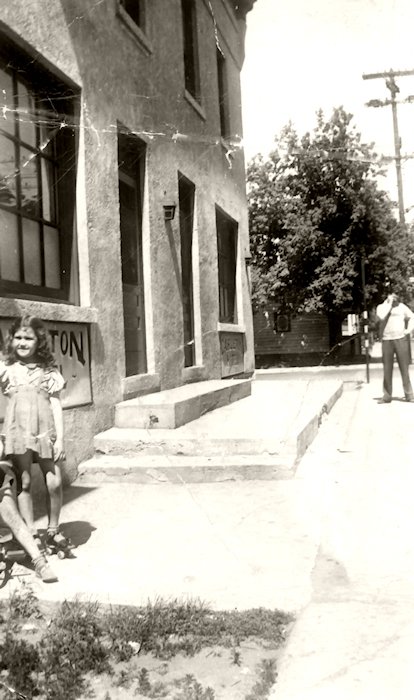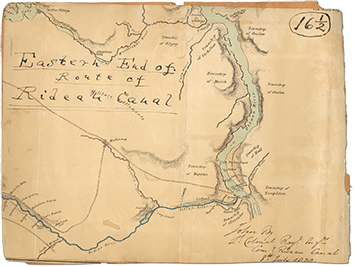
I was very interested to read Dave Allston’s 80 years of history at the Carleton Tavern (Kitchissippi Times). The Moran family that he references is none other than my own:
The Morans immediately converted the house back into a grocery store. Thomas Moran and his family resided upstairs, while a series of shopkeepers operated the grocery store on the main floor. In 1922, the family constructed a house next door at 229 Armstrong (now the site of Holland’s Cake and Shake), into which–in 1927– the Moran’s moved their grocery store. 223 then became the location of other types of businesses, including fruit dealers and butchers. In 1930, Thomas Moran decided to open a confectionery of his own on the main floor of 223. However it was his next move which would prove to be most significant.
In 1935, after five years of operating the confectionery, 75-year-old Thomas Moran extensively renovated the house at 223 Armstrong, and opened that fall as the Carleton Hotel…
…On February 26 1941, Moran sold the Carleton Hotel to Harold Starr and Harry Viau, for the sale price of $10,500.
Thomas Moran was the brother of my great-grandfather Alexander Michael Moran. It was Thomas and his wife Bridget Mary McDermott who first opened and operated the tavern (then called the Carleton Hotel). Family lore has it that they sold the tavern and its license because they didn’t think there was a future in liquor sales!
My father spent his early childhood living next door to the Carleton Tavern, at 231 Armstrong Street. He and his family lived upstairs, while his grandparents, Alexander Michael Moran and Anna (Annie) Maria Benton, ran a small grocery store downstairs. That’s my dad (just his leg) and his sister Rosemary in the above photo. My dad always told me that the man in the background was Harold Starr, who purchased the tavern in 1941.
My dad was a true Ottawa native born and bred. And he was also the product of an earlier Catholic parish-neighbourhood system, around which RC familial and communal life was once organized. He knew the city like the back of his hand; and he seemed to know, or know of, or know something about, almost every Irish Catholic family in the region, and quite a few French-Canadian Catholic families too. We (my sisters and I) had only to mention a classmate (we attended the “separate,” Roman Catholic schools), and our father would have a memory or an anecdote about his or her father or grandmother or second cousin or something. I now sincerely regret that I didn’t conduct formal oral history interviews with my father when I had the chance, he was such a rich source of Ottawa local history and folklore. But you know how it is: you keep meaning to do it, and then it’s too late. (Note to family history researchers: Do those oral interviews that you keep meaning to do. Do them NOW).
Anyway, my father used to love to take us on Sunday afternoon drives around Ottawa and the Ottawa Valley. We didn’t always know where we were headed, and neither, I’m sure, did he. “Where are we going, Dad?” we’d ask. “It’s a mystery,” he’d reply. We’d end up in Carp, or Arnprior, or maybe, for a more urban experience, in Sandy Hill. Always there were great stories, along with a treat (ice cream, perhaps, or maybe some fries from a chip wagon). I learned a lot on those Sunday drives, though of course I didn’t realize it at the time. We called them “Johnny’s Mystery Tours.”
My dad especially loved to take us to Armstrong Street and the Parkdale Market. He would point out the house where he had lived as a child, and then relay a tale of boyhood mischief that made his past seem like such a realm of unbelievable childhood danger and freedom! How I thrilled, in my safe and boring suburban middle-class enclave, to the notion of living upstairs from a grocery and next door to a tavern. This was an Ottawa that is rarely, if ever, captured by most Canadians’ idea of Ottawa as a city of dull-but-efficient bureaucrats, a starched-underwear town, the city that fun forgot.
This was an Ottawa of decidedly rougher edges, and of a good deal more local colour. A city of working-class pride, of pick-up hockey games, of Friday night fish fries, of ethnic rivalries between the Irish and the French (the Anglo Protestants apparently didn’t even enter the lists), of mothers gossiping over laundry lines, of my father learning how to curse from the dairymen down the street and then having his mouth washed out with soap. At 231 Armstrong Street.
Scrapbook page HERE.


Your father may have known my uncle Emile Beaupre, who owned a car repair shop on Gladstone from the 1930s through the 1970s (when his sons were operating it, well-known by then as a place that had original parts for antique cars). Emile’s wife was Frances Morris from Sheenboro.
Andrew J Morris
http://digdat.ajmorris.com/
I know a Morris family from Sheenboro.
Yeah, it’s quite possible, even probable, that my father knew, or at least knew of, your uncle Emile Bureau. Hintonburg-Mechanicsville was just not that big of a place.
Well, if you know a Morris from Sheen, that is my family — we all descend from George Morris who came from Mayo and married Anna Devine on Allumette Island. We are also connected to the Slattery’s (who came from Toomevara, Tipperary, but usually just referred to Nenagh as the place everyone would know), and Keons, and most other large Catholic-Irish families in Sheen, Chichester and Chapeau. They were really productive, there are just under a zillion descendants!
Andrew J Morris
http://digdat.ajmorris.com/